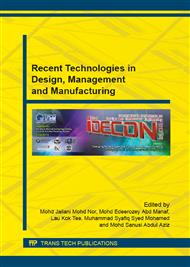p.594
p.599
p.604
p.609
p.615
p.619
p.624
p.631
p.636
Simulation-Assisted Ship Design Method for Maximizing Profit
Abstract:
In ship building, the design objective is based on the performance, in terms of technological aspects such as fuel oil consumption rate, maximum speed or combination of those. The proposed method simulates the detailed cost breakdown based on the developed ship performance model and estimates the operational condition to maximize the profit in the market. The operation condition determines the service speeds at full and empty ship, and the market includes the oil price and the freight market. By considering only the technological indicators and assuming technological systems and the fluctuation of economic situations, the designs give different results. This manuscript illustrates how the proposed method works in a case to determine a propeller of a large tanker.
Info:
Periodical:
Pages:
615-618
Citation:
Online since:
May 2015
Authors:
Keywords:
Price:
Сopyright:
© 2015 Trans Tech Publications Ltd. All Rights Reserved
Share:
Citation:


